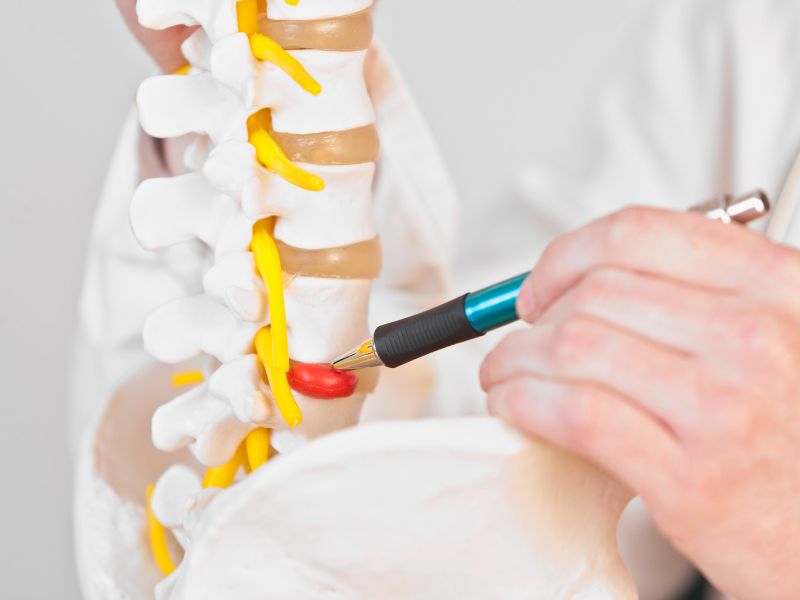Do you want to get the most out of your rehabilitation program and get your life back on track? Then join us in this blog post, where we’ll show you the top tips for overcoming your back injury and reclaiming a stronger, healthier spine. Don’t miss out on this opportunity to maximize the results of your rehab – it could be the first step to reclaiming your life!
Back Injury Rehabilitation

Back injury rehabilitation is the process of restoring function and reducing pain in the back after an injury. This type of rehabilitation can include exercises, physical therapy, and other treatments to help individuals regain strength and mobility in their back muscles.
Purpose of Back Injury Rehabilitation
The purpose of back injury rehabilitation is to help individuals recover from back injuries and reduce the risk of future injuries. By improving strength, flexibility, and range of motion in the back muscles, individuals can better support their spine and reduce the likelihood of further injuries.
Types of Back Injuries
There are several types of back injuries that can occur, including spinal stenosis, herniated discs, muscle strains and sprains, and sudden injuries. Each type of injury requires a different approach to rehabilitation.
Spinal Stenosis

Spinal stenosis is a condition where the spinal canal narrows, putting pressure on the spinal cord and nerves. Rehabilitation for spinal stenosis may include exercises to improve flexibility and strength in the back muscles. Learn more about spinal stenosis here.
Herniated Discs

Herniated discs occur when the soft tissue between the vertebrae in the spine pushes out through a tear in the outer layer. Rehabilitation for herniated discs may include physical therapy exercises to improve posture and strengthen the muscles that support the spine. Learn more about herniated discs and how we can treat it here.
Muscle Strains and Sprains
Muscle strains and sprains are common back injuries that can result from overuse or sudden movements. Rehabilitation for muscle strains and sprains may include rest, ice, compression, and physical therapy exercises to improve flexibility and strength in the affected muscles.
Sudden Injuries
Sudden injuries to the back can occur from accidents or falls. Rehabilitation for sudden injuries may include rest, ice, compression, and physical therapy exercises to improve flexibility and strength in the affected muscles.
Assessment to Begin Back Injury Rehabilitation
Assessment to Begin Back Injury Rehabilitation: Before beginning back injury rehabilitation, a physical exam and evaluation will be conducted to assess the extent of the injury. This may include identifying risk factors for injury recurrence and reviewing medical history and current health status.
Physical Exam and Evaluation
Before beginning back injury rehabilitation, a physical exam and evaluation will be conducted to assess the extent of the injury. This may include identifying risk factors for injury recurrence and reviewing medical history and current health status.
Identification of Risk Factors for Injury Recurrence
Identifying risk factors for injury recurrence is an important part of back injury rehabilitation. These risk factors can include poor posture, improper lifting techniques, and weak core muscles. By identifying these risk factors, healthcare professionals can create a personalized rehabilitation plan that addresses these issues and reduces the risk of future injuries.
Review of Medical History and Current Health Status
Before beginning back injury rehabilitation, a review of medical history and current health status is necessary. This information helps healthcare professionals understand any underlying conditions or medications that may affect the rehabilitation process. It also helps them identify any potential risks or complications that may arise during rehabilitation.
Principles for Maximizing Results from Back Injury Rehabilitation

To maximize results from back injury rehabilitation, it’s important to follow a few key principles. These include starting rehabilitation as soon as possible after an injury, following a personalized rehabilitation plan created by a healthcare professional, and being consistent with exercises and treatments. Additionally, it’s important to maintain good posture and body mechanics during daily activities to reduce the risk of future injuries.
Proper Posture and Ergonomics During Daily Living and Physical Activity
Proper Posture and Ergonomics During Daily Living and Physical Activity: Maintaining proper posture and ergonomics during daily living and physical activity is crucial for preventing back injuries. This includes sitting with your feet flat on the ground, keeping your shoulders relaxed, and avoiding slouching or hunching over. When lifting heavy objects, it’s important to use proper lifting techniques such as bending at the knees and keeping your back straight.
Healthy Weight Management Through Diet and Exercise
Maintaining a healthy weight through diet and exercise is important for preventing back injuries. Excess weight puts added stress on the spine, which can lead to pain and injury over time. Eating a balanced diet and engaging in regular exercise can help individuals maintain a healthy weight and reduce the risk of back injuries.
Core Muscles Strengthening Exercises
Strengthening the core muscles is an important part of back injury rehabilitation. These muscles support the spine and help maintain proper posture and body mechanics. Exercises that target the core muscles include planks, sit-ups, and back extensions. It’s important to work with a healthcare professional to develop a personalized exercise plan that targets specific areas of weakness and avoids exacerbating any existing injuries.
Book an Appointment With Alberta Back and Neck Rehab in Calgary Today
back injury rehabilitation is an important process for individuals recovering from back injuries. By following a personalized rehabilitation plan that includes exercises, physical therapy, and other treatments, individuals can regain strength and mobility in their back muscles and reduce the risk of future injuries. It’s important to maintain good posture and body mechanics during daily activities and engage in regular exercise to strengthen the core muscles and support the spine. If you’re experiencing back pain or have suffered a back injury, consider booking an appointment with Alberta Back and Neck Rehab. Our team of healthcare professionals can assess your injury, identify risk factors for injury recurrence, and create a personalized rehabilitation plan to help you recover as quickly and safely as possible. Don’t let back pain hold you back – book an appointment with us today!




